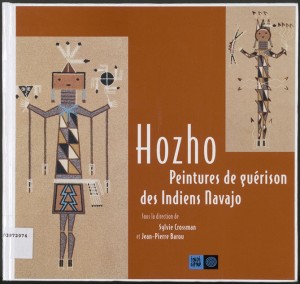In his recent work, Raymond Dupuis has explored what he calls urban territories. These photocollages showcase fractured places, attacked on all sides by colours and signs bringing the surface of his canvases to life. While ascribing a fanciful origin to the genesis of his current work, his Machine à explorer les signes (Sign-exploring machine) provides an explanation for the Hopi-pictogram inspired signs that keep cropping up in Dupuis’ work.
The Machine is in turns a fax machine, computer, photocopier, projector and many other devices, all thrown out of kilter with the precision of a mad scientist. Fed its diet of Hopi pictograms, the machine goes wild and skips across worlds and epochs, taken apart, as we’d say of a clock. And the end-product does relate to time: a xerography of time, grafting Hopi signs onto urban territories in a present time perpetually breaking out, as we say of laughter.
Machine à explorer les signes
Date Created: 2006
Assemblage in three parts, wood, metal and collage on cardboard, 132.5 x 45 x 37cm
This sign-exploring machine (Machine à explorer les signes) is a fanciful sculpture made of pieces of wood found here and there and a great many scraps of painted metal. The sculpture devises its own means of elaboration. A long, narrow strip, decorated with Hopi and Navajo drawings, is fed into one of the ends of the machine. Then, at the opposite end, the machine finishes off a contemporary collage. It is the artist’s ironic message about appropriation processes that are so common in contemporary art.
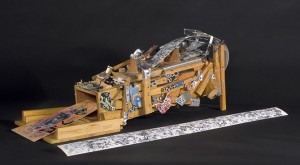
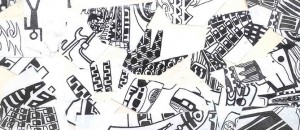
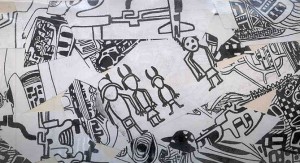
Territoire hors lieu
Date Created: 2005
Oil and photocollage on cardboard, 81 x 101.5cm
Dupuis’ large abstract collages attest to his urbanity and his commitment to make his story and the Malecite nation’s history a part of the time and space of urban territories. The collages combine signs, spots, drawing and photographs of very real places, placed more densely towards the centre of each work. A dynamic tension underscores all of his body of work, as if the artist was attempting to stop a headlong drift in its tracks.
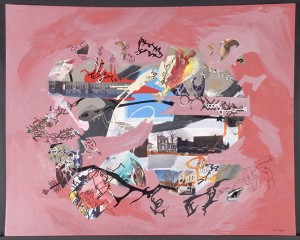
Territoire des mises à distance
Date Created: 2005
Oil and photocollage on cardboard, 81 x 101.5cm
Dupuis’ large abstract collages attest to his urbanity and his commitment to make his story and the Malecite nation’s history a part of the time and space of urban territories. The collages combine signs, spots, drawing and photographs of very real places, placed more densely towards the centre of each work. A dynamic tension underscores all of his body of work, as if the artist was attempting to stop a headlong drift in its tracks.
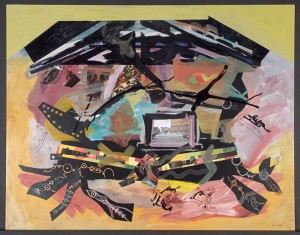
North American Indian Art
Creator: David W. Penney
Publisher: London, Thames & Hudson
Date Created: 2004
Book cover
North American Indian Art features a schematic warrior on its cover, in black, ochre and red, holding a spear and a round shield.
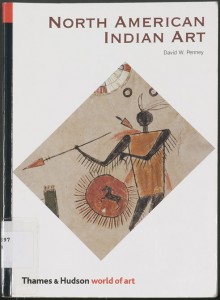
La nation navajo : tradition et développement
Creator: Marie-Claude Feltes-Strigler
Publisher: Paris, L’Harmattan
Date Created: 2000
Book cover
La nation navajo: tradition et développement has a simple, understated design: a white background, brown lettering and a Kachina spirit in the same colour, simply placed front and centre.
Hozho, peintures de guérison des Indiens Navajo
Creator: Sylvie Crossman et Jean-Pierre Barou (dir.)
Publisher: Montpellier, Indigène
Date Created: 2002
Hozho, peintures de guérison des Indiens Navajo : Catalogue d’une exposition présentée à la Galerie des hospices de Limoges, du 1er juin au 13 octobre 2002
Book cover
Hozho, peintures de guérison des Indiens Navajo has a reddish cover displaying two paintings on sand, typical of Navajo shamans, representing Kachina spirits. The geometrical forms of the figures, in black, grey and ochre are in sharp contrast to the sand-coloured surface of the paintings
